#Humulus lupulus
Explore tagged Tumblr posts
Text


Humulus lupulus
#hops#humulus lupulus#plants#naturecore#nature#crowcore#corvidcore#adventurecore#forest#outdoor#crowlivar#goblincore#adventure core#gremlin community
10 notes
·
View notes
Text
My Garden Flowers Part 1
Just thought I'd give you all the garden tour. :) I will update when I get more photos. This is of course not counting any of my ferns or conifers as they don't flower. I might do a series of foliage posts, though. All photos mine, unedited.



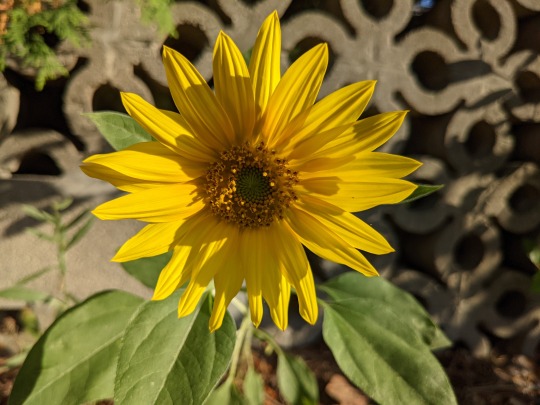






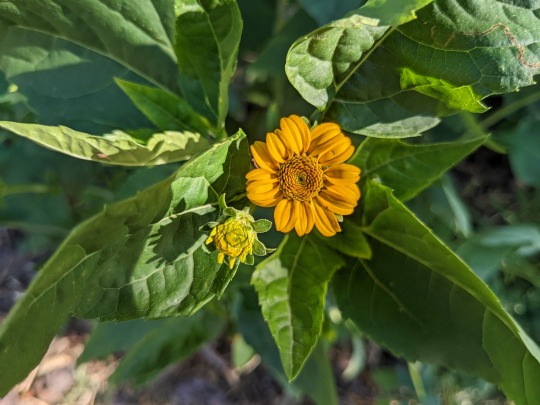

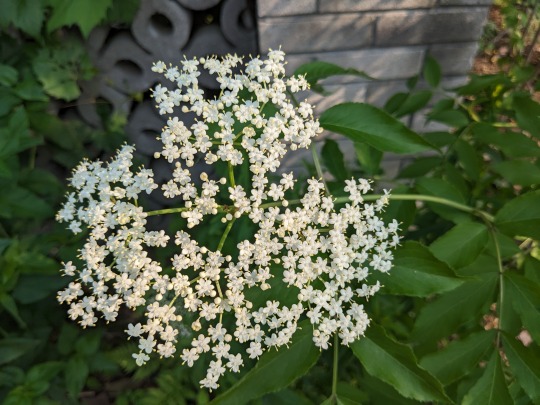

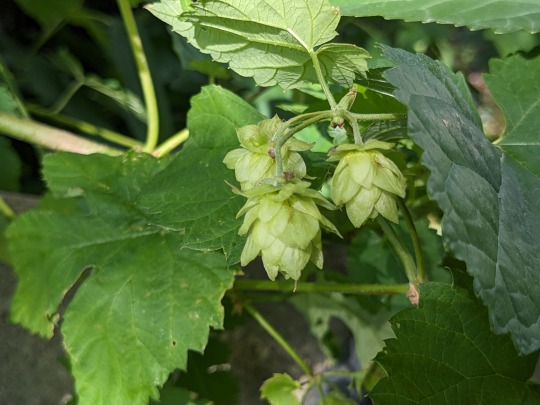


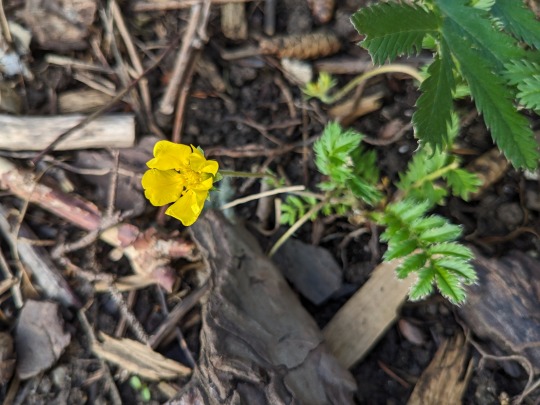
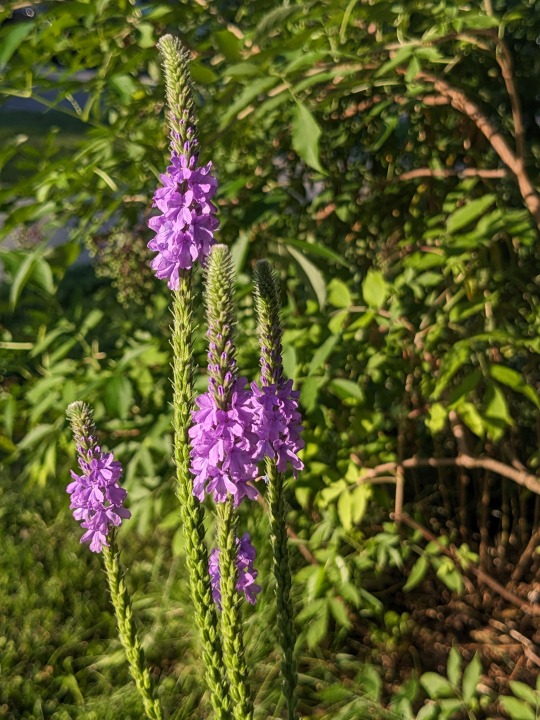
In order of appearance:
001. Canada Plum (Prunus nigra) Not pictured as she hasn't flowered yet. I have her in a shady spot and she's fairly slow-growing but healthy.
002. Yellow Monkeyflower (Mimulus guttata) An annual that sadly doesn't seem to have reseeded despite flowering profusely last year. But maybe next year! That happens sometimes.
003. Boreal Yarrow (Achillea millefolia borealis) The place where she is is north-facing so she doesn't get quite as much sun as she'd like, so she can get a bit leggy but she still flowers so it's fine.
004. Canada Goldenrod (Solidago canadensis) Not pictured as I haven't got any pictures yet, but I will if she flowers this year. I actually had to move her because she had planted herself in a not ideal location in my garden. Which is fine because I wanted one anyway.
005. Vierhapper's Aster (Aster alpinus vierhapperi) This was supposed to be Canada goldenrod, but it's okay because Canada goldenrod planted herself. I relocated her to the intended spot and they get along fine together. Asters and goldenrods generally do. :)
006. Common Sunflower (Helianthus annuus) I did not plant this! Must have been given to me by a bird or squirrel. Sadly she didn't reseed. Oh well, she's a cultivar and I did get the wild type. Interesting to me that she actually flowered in that area when her cousin stubbornly refuses to.
007. Obedient Plant (Physostegia virginiana) This refers to the fact you can move the flowers around, not to the behaviour of the plant, which is very aggressive.
008. Black Chokeberry (Aronia melanocarpa) Not pictured as she hasn't flowered yet.
009. Enchanter's Nightshade (Circaea lutetiana) I didn't plant her; she just started coming up everywhere when I removed the grass. She is not a nightshade. I've learned that even people interested in planting natives regard her as a weed. I disagree. She's not aggressive to other plants and she's pretty.
010. Northern Gooseberry (Ribes oxyacanthoides) Not pictured as she hasn't flowered yet.
011. New Jersey Tea (Ceanothus americanus) Haven't tried her for tea yet, but she's a lovely little bush.
012. Sunchokes (Helianthus tuberosa) Aforementioned cousin of the common sunflower. Not pictured as she keeps making her flowerbuds too late in fall so the frost gets them before they can open.
013. Potato Bean (Apios americana) Not pictured as she hasn't flowered yet.
014. Common Milkweed (Asclepias syriaca) SUPER fragrant, especially in the evening. This is an aggressive plant but worth it for the flowers, the fragrance, and the butterflies they attract. Not to mention the young shoots, flower clusters, young leaves, and young seedpods are all edible if cooked properly!
015. Northern Bayberry (Myrica pennsylvanica) Not pictured as she hasn't flowered yet. Her leaves are nice and evergreen, though.
016. Virginia Strawberry (Fragaria virginiana) Also known as "wild strawberry", but so is her cousin. She flowers reliably every spring but no strawberries yet. The flowers themselves are edible but I keep hoping she'll make strawberries. lol
017. Nannyberry (Viburnum lentago) Not pictured as she hasn't flowered yet.
018. Riverbank Grape (Vitis riparia) Not the greatest picture, but the point is I will get grapes one of these years!
019. False Sunflower (Heliopsis helianthoides) It was hard to pick a favourite photo. They're really quite stunning. She blooms from July until the frosts of October. :)
020. Canadian Serviceberry (Amelanchier canadensis) Not pictured as she hasn't flowered yet. She's a wee little tree in the shade for now.
021. New England Aster (Symphyotrichum novae-angliae) Probably the most attractive of the Symphyotrichum asters, to be honest. The flowers are more compact than most of her relatives while still being a decent size, and the colour is much more saturated too. And the bees absolutely love her. But that doesn't stop me enjoying other asters!
022. Common Elder (Sambucus canadensis) She almost died when I potted her for the move. See I dug up as much of her taproot as I could, but she'd already gone quite deep and I had to break it. But she lived! She's quite big now and has these wonderful lacy white elderflowers every year, with elderberries to follow.
023. Coralberry (Symphoricarpos orbiculata) Not pictured as I didn't get any pictures yet. Should have when I first got her. She was in flower then. She hasn't since.
024. Black Raspberry (Rubus occidentalis) Not pictured as I don't have pictures yet. Don't know why. lol I've taken pictures of the berries. I'll remember next year.
025. Fox Geranium (Geranium robertianum) A true geranium I managed to trade for last year. You mostly find these in the woods and now I have her in my garden.
026-027. Common Hops male and female flowers (Humulus lupulus) I can't remember which is which, but yeah! I could flavour beer if I was a brewer. :)
028. American Spikenard (Aralia racemosa) Another one with lacy little white flowers, and it looks like some of them are going to fruit!
029. Silverweed (Argentina anserina) After several failed attempts, this one has finally taken off. Truly lives up to her name in the spring and has these nice yellow flowers later on.
030. Hoary Vervain (Verbena stricta) The name must refer to the leaves, which are kind of blue-grayish, because the flowers are just a nice purple.
#blackswallowtailbutterfly#my photos#photography#my garden#garden flowers#native plant gardening#native flowers of Carolinian Canada and USA#Mimulus guttata#Achillea millefolium borealis#Aster alpinus vierhapperi#Helianthus annuus#Physostegia virginiana#Circaea lutetiana#Ceanothus americanus#Asclepias syriaca#Fragaria virginiana#Vitis riparia#Heliopsis helianthoides#Symphyotrichum novae-angliae#Sambucus canadensis#Geranium robertianum#Humulus lupulus#Aralia racemosa#Argentina anserina#Verbena stricta
14 notes
·
View notes
Text

{{VENDU}}
ዛꚶᙏꚶԸꚶꕷ ԸꚶᖘꚶԸꚶꕷ έψιλον
HERBARIUM : Houblon (Humulus Lupulus)
LIEU DE CUEILLETTE : mon jardin
#the crypt and the incubus#witch jewelry#electroformed jewelry#botanical jewelry#pendentif#humulus lupulus#houblon
1 note
·
View note
Text





On a hop farm, Poperinge, Flanders, Belgium
#hop#farm#countryside#photography#cottagecore#nature#agriculture#50 shades of green#humulus lupulus#original photographers#photographers on tumblr#lensblr#original photography#pws
5 notes
·
View notes
Text
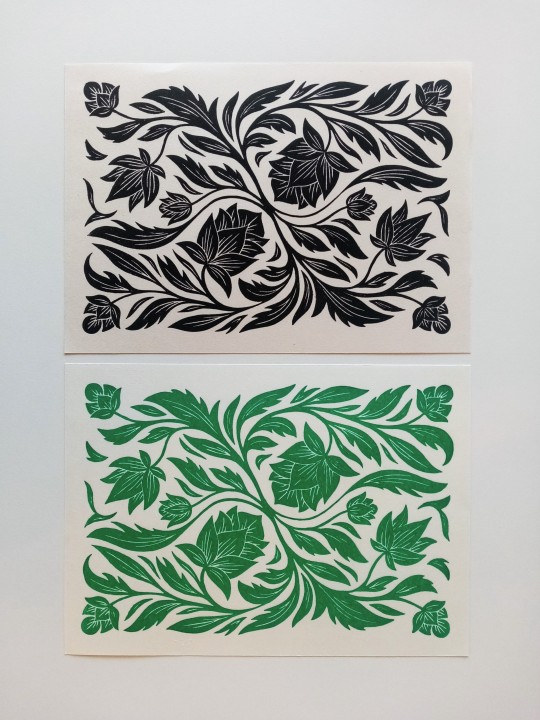
Another floral print (for once created from my own brain without the help of various ornamental design books). It unintentionally ended up looking very hoppy, right down to the serrated leaves, so I've printed it in this thinned-out phthalo green as well.
#linocut#relief print#blockprinting#printmaking#floral#ornament#hops#fun fact for the hop enjoyers among you: the latin name for the hop plant is humulus lupulus (loosely translated as 'wolf of the woods')#not that i can find any justifiable reason for why that may be...
49 notes
·
View notes
Text
Moth of the Week
Peppered Moth
Biston betularia

The peppered moth is a part of the family geometridae. It was first described in 1758 by Charles Linnaeus. This moth gains its name from its speckled coloration, which has been studied as an example of natural selection and population evolution.
Description This species has a short body with narrow forewings. The body and wings are the same white base peppered with black dots and irregular black lines. This speckled pattern may vary with some moths having very few spots and others having so many that they look as if they are black with white spots as opposed to white with black. In rare cases, the black on the wings and body is replaced with gray or brown and in even rarer cases the spots are a combination of brown and black/gray. These spots help the moth camouflage against lichen on trees.
The evolution of this moth had been studied extensively during the last two hundred years, which created the term “industrial melanism.” During the Industrial Revolution, air pollution killed off lichen and covered trees in soot. This caused moths with a black spots on white base (typica) coloration to lose their camouflage and die off due to predators. This caused a spike in population for moths with a darker coloration (carbonaria) because they had the camouflage advantage. Once environmental conditions improved, the lighter colored moths once again became the dominant coloration.
The male’s antennae are bipectinate, meaning it has two rows of rami going down either side of a singular flagellum.
Wingspan Range: 45 - 62 mm (≈1.77 - 2.44 in)
Diet and Habitat The caterpillar of this moth eats many trees, shrubs, and small plants such as Blackthorn (Prunus spinosa), Hawthorn (Crataegus monogyna), Downy (Betula pubescens) and Silver Birch (Betula pendula), limes, sallows, poplars, oaks, Sweet Chestnut (Castanae sativa), Beech (Fagus sylvatica), Bramble (Rubus fruiticosus), Broom (Cytisus scoparius), Black Currant (Ribes nigrum) and Hop (Humulus lupulus).
They have a wide range, being found in China (Heilongjiang, Jilin, Inner Mongolia, Beijing, Hebei, Shanxi, Shandong, Henan, Shaanxi, Ningxia, Gansu, Qinghai, Xinjiang, Fujian, Sichuan, Yunnan, Tibet), Russia, Mongolia, Japan, North Korea, South Korea, Nepal, Kazakhstan, Kyrgyzstan, Turkmenistan, Georgia, Azerbaijan, Armenia, Europe and North America. They prefer habitats of woodland, scrub, hedgerows, parks and gardens.
Mating Depending on its location, this moth can have one or two generations per year. In Great Britain and Ireland, the peppered moth has one generation per year, whilst in south-eastern North America it has two generations per year. They emerge from the pupea in late May to August.
The females attract males with pheromones, which are carried by the wind. Males follow the concentration gradient to find the female. The male guards the female from other males until she lays the eggs. The female lays about 2,000 pale-green ovoid eggs about 1 mm in length into crevices in bark with her ovipositor.
Predators This species is a night-flying moth, making the vulnerable to bats. The males in particular fly every night to search for a female while females fly only the first night.
To protect themselves from birds during the day, this species rests on lichen covered trees to camouflage themselves.
The day time resting positions of this moth have been recorded and studied. This study shows that the peppered moth prefers resting spots that are covered such as below where the trunk and a branch meet, the underside of branches, and leafy twigs.
Additionally, the study found peppered moths with a lighter coloration (typica) blend in better against crustose lichens rather than foliose lichens because birds can see ultraviolet light. The peppered moth reflects UV light while crustose lichens don’t, making them easier to pick out.
Fun Fact The caterpillars of the peppered moth resemble things in both color and size. An experiment published in 2019 done on the caterpillars of the peppered moth showed that the larva (even when blindfolded) could sense the color of the tree they live on and change their body color to match and/or would move to a different twig that was closest in color to their own body.
(Source: Wikipedia, Butterfly Conservation, Max Planck Institute)
#Biston betularia#libraryofmoths#animals#bugs#facts#insects#moth#lepidoptera#mothoftheweek#Geometridae#peppered moth
91 notes
·
View notes
Text

熊四手[Kumashide] Carpinus japonica
熊[Kuma] : Bear
四手[Shide] : Sacred paper streamer used in Shintō
A deciduous tree endemic to Japan, it grows along roadsides in mountainous areas and becomes over ten meters tall. The wood is hard and is used as a material for furniture, tools, etc.
The fruiting ear that resembles the female flower of the hop(Humulus lupulus) are about six to ten centimeters long. It turns from light green to light brown as it ripens through the autumn. 熊 in the name was given because of its large size and 四手 because of its similarity in the way it hangs.
The flowering season is spring, and the shape of the spike is long and slender at that time.
16 notes
·
View notes
Text
Content Warnings: Discussions of alcohol
As a note, I'm not a professional taxonomist or anything, was just curious about these things. So I might be incorrect! I just really like researching things, and I wanted to research the vines that appear in Tear Drop! (I also really like Tear Drop. Top song for me.)
This also all might just be a ramble about something completely not important, as @amugoffandoms actually suggested a reading of the vines being allegorical of the audience to Yuno- and if that's the case, then the species might not be important at all. Just things to keep in mind.

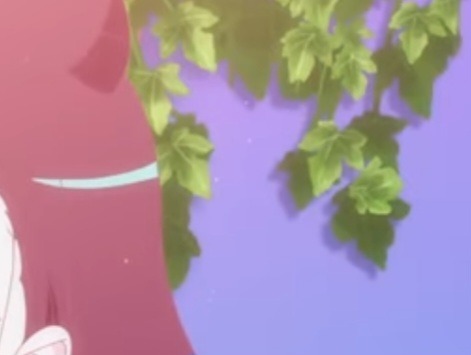
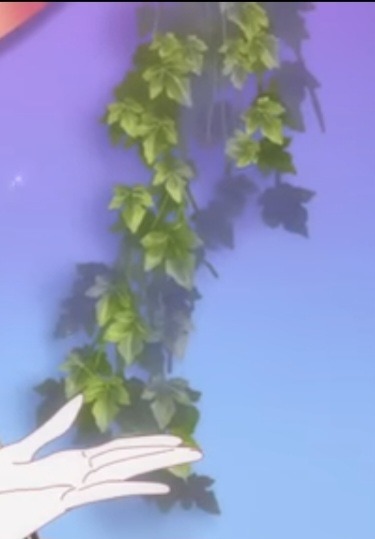
The vines in Yuno's room in Tear Drop are palmate in shape, with 5 lobes. From what I can tell, their margins are definitely not smooth, though I can't tell if they're serrated or just bumpy. Based on this description, and assuming this vine is meant to be Japanese, my best match for this plant is Japanese Hops, or Humulus japonicus.

These guys are MASSIVELY invasive in the states due to how fast they grow, to the point where when I began researching these, all I could find was sites stating not to buy these and how to get rid of them. If you know anything about the Humulus genus, you probably know about Humulus lupulus, or the common hop, as they are commonly used for crafting beer. Now, these guys actually aren't recommended for that- and in fact some of the sites I've found said they taste terrible! Something about lacking the proper oils.
Anyways, most sources told me these were largely used for both ornamental and medicinal purposes, but the medicinal purposes kept changing depending on what site I checked. Wikipedia said they had cooling properties and I tried to corroborate that(as I naturally do not trust what Wikipedia has to say and use it more as a jumping off point) due to Yuno's symbolism, but I couldn't find anything.
And yeah, just a quick thing on something I noticed, if any of you have a better idea what the vines are, I'd love to know.
25 notes
·
View notes
Text

H – Humulus lupulus L. – Luppolo comune (Cannabaceae)
22 notes
·
View notes
Text
Humal
Humulus lupulus L., Cannabaceae Metshumal, omal, tapud, tapunaadid, tapuvääned, viha, õlleviha Hops
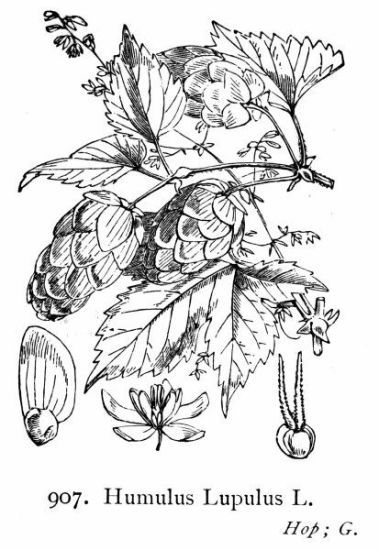
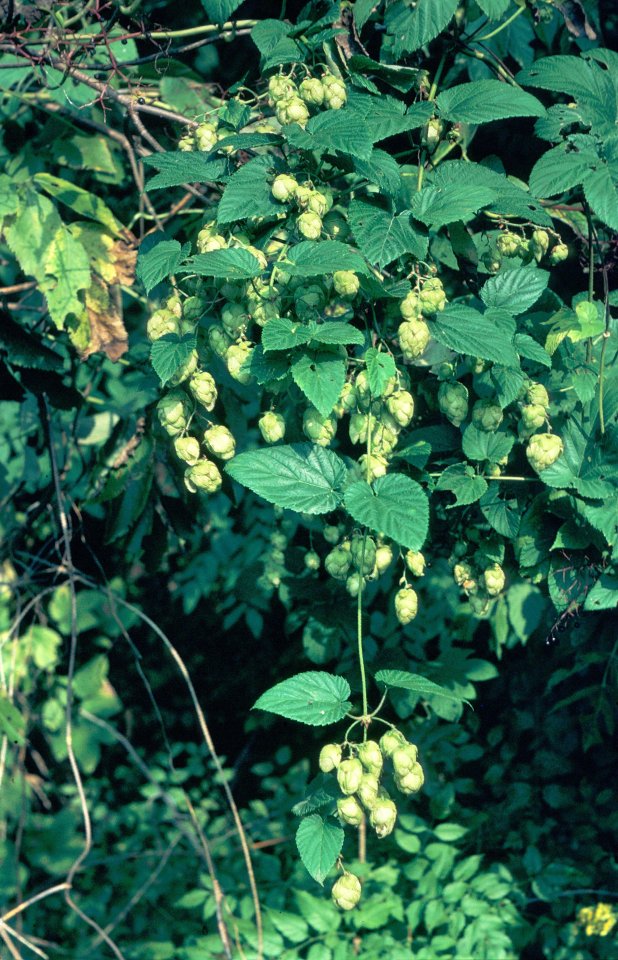
Humal kasvab jõgede ja ojade kaldatihnikutes, vajukates niisketes kaldametsades ja metsaservadel, tihti ka kultiveeritavana elamute läheduses tapuaedades.
Ravimina kasutati humala käbi.
Humalat kasutatakse rahustina ja valuvaigistina põie- ja neeruhaiguste puhul, ka närvi- ja südamehaiguste ravimisel rahustusvahendina (valokordiini koostises) ning unetuse korral.
Korjatakse juulis ja augustus.
Kirjeldus
Humal kasvab jõgede ja ojade kaldatihnikutes, vajukates niisketes kaldametsades ja metsaservadel, tihti ka kultiveeritavana elamute läheduses tapuaedades.
Ta on mitmeaastane taim rohkete maasiseste horisontaalsete võsunditega, millest lähtuvad lisajuured ja varred. Vars on väänduv (paremale poole), 3-6m pikk, kuni 1cm jäme, kattunudkahetipuliste haajate ronikarvadega. Lehed vastakud, pikarootsulised, ülemised ümardunud või munajad, alumised kolme- või viielõhesed, tömpide hõlmadega, saagjate servadega, pealt tumerohelised, lidus harjaskarvade tõttu väga karedad, alt heledamad, kattunud hõredate kollakate näärmekarvadega; abilehed munajad, terveservalised, enam-vähem kokku kasvanud.
Humal on kahekojaline taim; isasõied hõredalt pöörisjad, kaenlasisesed, ebasarikjad, õiekroon 3mm pikk, 5 valkjasrohelise õiekattelehega, 5 lühikese tolmukaga, kollaste tolmukapeadega, emasõied tuhedas käbitaolises ebapeas lühikeste oste otsas, kattunud näärmetega, lühiraolised.
Õitseb juulis või augustis.
Ravim
Praegu humalaid ravimina peaaegu ei tarvitata, kuid varem olid ravivahendiks humala emasõisikud, "käbid" - sitobuli Lupuli - ja nendelt sõelumisel eraldatud näärmed - glandulae Lupuli ehk Lupulinum.
Käbisid lühikese raoga kogutakse veidi enne valmimist augusti keskel või lõpul, kui nad on rohekaskollased. Käbid tuleb kohe kuivatada väljas või õhurikkas ruumis õhukese kihina. Droogi moodustavad terved, mittepudenenud, rohekaskollakad käbid tugeva aromaatse lõhnaga ja teravalt mõru maitsega. Kollakaspruunid käbid on ülevalminud ega kõlba droogiks.
Humalakäbid ja lupuliin sisaldavad mõruainet, eeterlikku õli, vaiku, kollast värvainet, palderjanhapet, trimetpplamiini, koliini.
Toimed
Droogi on kasutatud rahustina ja valuvaigistina põie- ja neeruhaiguste puhul, ka närvi- ja südamehaiguste ravimisel rahustusvahendina (valokordiini koostises) ning unetuse korral.
Tavaline annus: 1 teelusikatäiest humalakäbidest valmistada ühe klaasi keeva veega tee ja see õhtul sisse võtta. Humal kuulub ka nn. rahustava tee koostisesse. Välispidiselt on kasutatud droogi hautisena reumavalude puhul. Humalakäbide keedist soovitatakse ka pea pesemiseks juuste väljalangemise korral.
Peamiselt kasutatakse humalaid õlletööstuses.
Taime levi

Allikad
Tammeorg, J., Kook, O. & Vilbaste, G. (1973). Eesti NSV Ravimtaimed. Tallinn: Valgus.
Eesti taimede levikuatlas 2020
#humal#ravimtaimed#juuli#august#valuvaigisti#rahusti#neerud#põis#närvihaigused#südamehaigused#unetus
10 notes
·
View notes
Text
Native Plants I’ve Actually Seen Growing Wild in Southern Ontario
Acer saccharinum (silver maple) --along the sides of highways
Acer saccharum (sugar maple) --GTA ravines
Achillea millefolia (yarrow) --GTA ravines
Allium schoenoprasum (wild chives) --GTA ravines, Ridgetown
Allium tricoccum (ramps) --Niagara region escarpments
Amaranthus retroflexus (redroot amaranth) --fallow areas in the GTA
Ambrosia artemisiifolia (ragweed) --fallow areas in the GTA
Ambrosia trifida (giant ragweed) --parks in the GTA
Amelanchier spp. (saskatoon/serviceberry) --GTA ravines
Arisaema triphyllum (Jack-in-the-pulpit) --GTA ravines
Aronia melanocarpa (black chokeberry) --ravines and parks in the GTA
Asarum canadense (Canada ginger) --GTA ravines
Asclepias syriaca (common milkweed) --fallow areas, ravines, and parks throughout southern Ontario from Windsor to GTA
Asplenium trichomanes (maidenhair spleenwort) --Niagara region escarpments
Betula spp. (birch) --ravines and parks throughout southern Ontario from Windsor to GTA
Bidens spp. (beggar ticks) --GTA ravines
Caulophyllum thalictroides (blue cohosh) --GTA parks
Ceratophyllum demersum (hornwort) --GTA ravines (native in freshwater across the globe anyway)
Circaea lutetiana (enchanter’s nightshade) --fallow areas in the GTA
Commelina spp. (dayflower) --fallow areas in Windsor
Cornus alternifolia (Pagoda dogwood) --GTA wooded areas
Cornus sericea (red osier dogwood) --GTA ravines and in Windsor riverside parks
Crataegus spp. (hawthorn) --GTA ravines and parks
Echinocystis lobata (wild prickly cucumber) --GTA ravines
Elaeagnus commutata (silverberry) --GTA parks and fallow areas
Epilobium ciliatum (fringed willowherb) --fallow areas in the GTA
Equisetum spp. (horsetail/scouring rush) --GTA ravines and fallow areas
Erigeron spp. (fleabane) --GTA parks and fallow areas, Ridgetown
Erythronium americanum (trout lily) --GTA ravines and parks
Eutrochium maculatum (Joe-Pye weed) --GTA parks
Fragaria virginiana (wild strawberry) --fallow areas in the GTA
Geranium maculatum (wild geranium) --Windsor green spaces
Geranium robertianum (herb robert) --Windsor green spaces
Geum aleppicum (yellow avens) --GTA fallow areas
Geum canadense (white avens) --GTA fallow areas
Geum macrophyllum (large-leaved avens) --GTA fallow areas
Gymnocladus dioicus (Kentucky coffee tree) --GTA ravines
Helianthus spp. (sunflower) --GTA fallow areas and parks
Heracleum maximum (cow parsnip) --GTA ravines
Hordeum jubatum (foxtail barley) --GTA fallow areas
Humulus lupulus (hops) --GTA ravines
Hydrophyllum virginianum (Virginia waterleaf) --GTA ravines
Impatiens capensis (jewelweed) --GTA ravines and in Windsor riverside parks
Juglans nigra (black walnut) --GTA ravines
Lactuca canadensis (Canadian lettuce) --GTA fallow areas
Lilium michiganense (Michigan lily) --GTA ravines
Lupinus perennis (sundial lupine) --GTA parks
Maianthemum canadense (Canada mayflower) --GTA ravines
Maianthemum racemosum (starry false solomon’s seal) --GTA ravines and parks
Maianthemum stellatum (starry false solomon’s seal) --GTA ravines
Matteuccia struthiopteris (ostrich fern) --GTA ravines
Monarda fistulosa (wild bergamot) --GTA ravines and parks
Morus rubra (red mulberry) --fallow areas in Windsor, GTA parks
Myosotis laxa (smallflower forget-me-not) --GTA fallow areas
Oenothera biennis (evening primrose) --GTA fallow areas
Onoclea sensibilis (sensitive fern) --GTA ravines
Oxalis stricta (yellow wood sorrel) --fallow areas and ravines throughout southern Ontario from Windsor to GTA
Parietaria pensylvanica (Pennsylvania pellitory) --GTA fallow areas
Parthenocissus quinquefolia (Virginia creeper) --Windsor fallow areas and GTA ravines and parks
Persicaria lapathifolia (curlytop smartweed) --GTA fallow areas
Podophyllum peltatum (mayapple) --GTA ravines and parks
Portulaca oleracea (purslane) --fallow areas throughout southern Ontario from Windsor to GTA (native globally anyway)
Potentilla norvejica monspeliensis (ternate-leaved cinquefoil) --GTA fallow areas
Prunella vulgaris (selfheal) --fallow areas and ravines throughout southern Ontario from Windsor to GTA
Prunus virginiana (chokecherry) --Windsor fallow areas, GTA ravines and parks, Niagara region escarpments
Pteridium aquilinum latiusculum (western bracken fern) --GTA parks
Quercus spp. (oak) --wooded areas throughout southern Ontario from Windsor to GTA
Rhus typhina (staghorn sumac) --parks and fallow areas throughout southern Ontario from Windsor to Collingwood
Ribes spp. (currants) --GTA ravines and parks
Ribes spp. (gooseberries) --GTA ravines
Robinia pseudoacacia (black locust) --GTA ravines and parks
Rosa spp. (roses) --GTA ravines, parks, and fallow areas
Rubus occidentalis (black raspberry) --ravines, parks, and fallow areas in Hamilton and GTA
Rubus odoratus (purple-flowered raspberry) --GTA ravines and parks
Rubus strigosus (American red raspberry) --GTA parks
Rudbeckia hirta (black-eyed susan) --GTA parks
Salix spp. (willow) --GTA ravines
Sambucus canadensis (common elderberry) --Windsor riverside parks, GTA ravines
Sambucus racemosa (red elderberry) --GTA ravines and parks
Smilax spp. (greenbrier) --GTA parks
Solidago canadensis (Canada goldenrod) --parks and fallow areas throughout southern Ontario from Windsor to GTA
Sorbus spp. (mountain ash) --GTA ravines and parks
Streptopus spp. (twistedstalk) --GTA parks
Symphoricarpos spp. (snowberry) --GTA parks
Symphyotrichum ericoides (heath aster) --fallow areas throughout southern Ontario from Windsor to GTA
Symphyotrichum novae-angliae (New England aster) --fallow areas throughout southern Ontario from Windsor to GTA
Symplocarpus foetidus (skunk cabbage) --GTA parks
Tilia spp. (linden) --GTA ravines
Trillium grandiflorum (white trillium) --parks throughout southern Ontario from Windsor to GTA
Tsuga canadensis (eastern hemlock) --GTA parks
Typha latifolia (broad-leaved cattail) --marshes in Essex county and GTA
Urtica gracilis (slender nettle) --GTA ravines
Uvularia spp. (bellwort) --streams in Windsor green spaces
Verbena hastata (blue vervain) --GTA ravines
Viburnum lentago (nannyberry) --GTA parks and Ridgetown ravine
Viburnum trilobum (highbush cranberry) --Ridgetown
Viola sororia (wood violet) --fallow areas and wooded areas throughout southern Ontario from Windsor to GTA
Vitis riparia (riverbank grape) --GTA fallow areas, ravines, and parks
Waldsteinia fragarioides (barren strawberry) --GTA ravines and parks
Xanthium strumarium canadense (Canada cocklebur) --GTA parks and fallow areas
I’ve likely seen many others and just couldn’t identify them, but there are a lot I’ve never seen growing wild. What I’m hoping is that some of the native species I have in my garden will make their way to the nearby ravine. If I get around to it, though, I might just take a walk with some Asclepias incarnata (swamp milkweed) seeds in the fall. They certainly seem to successfully germinate in my garden whether I want them to or not (don’t have space for them to go crazy). Can’t see why they wouldn’t in a natural swamp area.
#text post#long text post#native plants of Ontario#native plants of North America#wild native plants
10 notes
·
View notes
Text



ዛꚶᙏꚶԸꚶꕷ ᖘᕔᕓꗞᙁĬꕷ
HERBARIUM : Houblon (Humulus Lupulus)
LAPIDARIUM : Turquoise, Cyanite bleue
LIEU DE CUEILLETTE : mon jardin
#the crypt and the incubus#witch jewelry#electroformed jewelry#botanical jewelry#boucles d'oreilles#humulus lupulus#houblon#turquoise#cyanite
1 note
·
View note
Text
Moth of the Week
Angle Shades
Phlogophora meticulosa
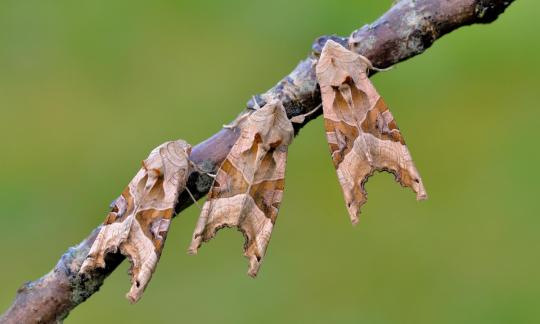
Image source
The angle shades is a part of the family Noctuidae. This species was first described in 1758 by Carl Linnaeus. According to Wikipedia, this moth gets its common name from the colors and marking on its wings.
Description The forewings of this moth are shaped with a sharp point. Most of the forewing is buffish as well as the head, legs, body, and antennae. The middle of the forewing is split by a triangle. The bottom of the triangle lays on the termen of the forewing or “the edge of the wing most distant from the body.” The triangle is made of layers of brown and pink. The hindwings are whitish with darker veins.
ab. roseobrunnea ab. nov [Warren], the central triangle is a rich red brown tinged with fulvous (tawny/orange), the whole wing reddish tinged, and the green shades all strongly mixed with red, the metathorax and dorsal tufts also being deep fulvous instead of green; found in São Jorge Island in the Azores
Wingspan Range: 45 - 52 mm (≈1.77 - 2.05 in)
Diet and Habitat This species eats a wide range of herbaceous plants such as Common Nettle (Urtica dioica), Hop (Humulus lupulus), Red Valerian (Centranthus ruber), Broad-leaved Dock (Rumex obtusifolius), Bramble (Rubus fruiticosus), Hazel (Corylus avellana), birches, oak, basil, and broccoli.
They are distributed throughout Europe. Their reach spans eastto the Urals, southeast to Syria, Armenia, and Asia Minor, west to Azores, and south to Algeria. They are a strongly migratory species. It is found in a variety of habitats such as gardens, hedgerows, fens, woodland, grasslands, farmland, wetlands, heathland, and moorland.
Mating This moth is generally seen from May to October and has two generations per year. The larva overwinter in soil as pupa.
Predators This species flies mainly at night. They are presumably preyed on by nighttime predators such as bats. This moth uses its coloration to disguise itself as a wilted leaf when at rest. They can be seen during the day resting on walls, vegetation, and feces.
Fun Fact The angle shades is attracted to light and sugar.
(Source: Wikipedia [1][2], Butterfly Conservation, The Wildlife Trusts)
#libraryofmoths#animals#bugs#facts#insects#moth#lepidoptera#mothoftheweek#angle shades#Phlogophora meticulosa#Noctuidae
52 notes
·
View notes
Text

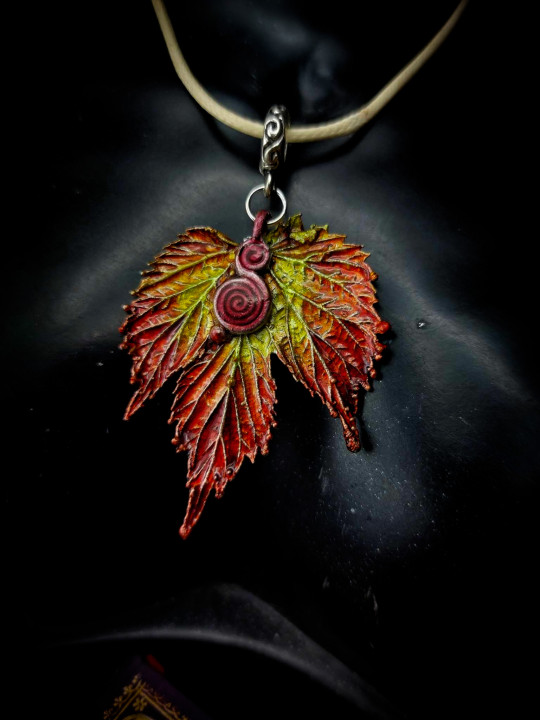
ዛꚶᙏꚶԸꚶꕷ ԸꚶᖘꚶԸꚶꕷ θήτα
HERBARIUM : Houblon (Humulus Lupulus)
LIEU DE CUEILLETTE : mon jardin
#the crypt and the incubus#witch jewelry#electroformed jewelry#botanical jewelry#pendentif#humulus lupulus#houblon
1 note
·
View note